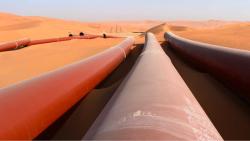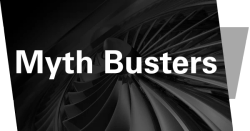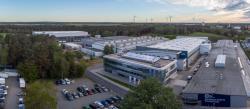
OR WAIT null SECS
© 2024 MJH Life Sciences™ and Turbomachinery Magazine. All rights reserved.
Technical notes on gas turbine sizing, speed, start-up, and component life
1 INTRODUCTION
Technical notes on gas turbine starting device, starting, reference check, component life, inspection, sizing and speed range selection are discussed. The main concerns are gas turbine arrangement and operation solution to obtain optimum fuel consumption, low emission and reasonable reliability.
2 STARTING DEVICE AND STARTUP
Special care should be taken in starting device selection and rating. The preferred starting device is usually electro-hydraulic (electric motor drives a hydraulic pump, which in turn transmits hydraulic power to start the gas turbine) rated to supply minimum 110 percent of the starting and acceleration torque as a worse case. Helper drivers are not recommended. Of course, for some special applications like large LNG compressor trains using a Frame 7 or Frame 9 single shaft heavy frame gas turbine driver, a helper motor is mandatory. The gas turbine should be capable of an immediate hot start at anytime after trip for minimum three consecutive start attempts. Cold-start and hot-start restrictions are very important. These details should be finalized in the bidding stage. Igniters should not remain in the primary combustion zone during operation.
The rotating assemblies such as rotating blades (or shrouded rotating blades, etc) should be designed to start-up without rubbing. Renewable sealing components (such as labyrinths, honeycombs, or abradable surfaces) are required at all internal close-clearance points between the rotating and stationary parts and all external points where shafts pass through the casings. Maintaining of clearances is, in particular, a problem in gas turbines, due to the changes in temperature between a cold and an accelerating condition. The stationary components expand at a different rate than rotating components. The most severe case (which is usually after a re-start) determines the minimum clearance.
3 REFERENCE CHECK AND COMPONENT LIFE/INSPECTION
It is best to select a gas turbine model with at least two successful references with a record of continuous operation for a minimum of 24,000 fired hours (around three years operation) satisfactorily throughout operation without major damage to main components such as air-compressor, turbine, stationary parts in the combustion hot gas path, etc.
Main components including rotors, casings, bearing housings, supports, base-frame, etc should have a minimum expected life of 160,000 operating hours (20 years). Planned time between major overhauls, hot gas path inspection and bore-scope inspection could be roughly considered around 40,000 fired hours (5 years), 16,000 fired hours (2 years) and 8,000 fired hours (1 year) respectively. These values are only indications. Accurate values depend on type, model and details of gas turbine and should be asked from vendor.
4 GAS TURBINE SIZING AND SPEED
Optimum gas turbine driver over-rating compared to driven equipment shaft required horse power:
A) 5% as tolerance to meet the driven equipment required power.
B) 5% for long-term gas turbine deterioration.
C) 2% for mid-term fouling and erosion.
D) 3% for gear box (if applicable).
Totally: around 12-15%.
For variable speed mechanical drive applications, target speed ranges for single shaft gas turbine and two shaft (or multi-shaft) gas turbines could be recommended as 15% (90 to 105% of rated speed) and 55% (50% to 105%) respectively. These speed ranges could be considered as desirable targets. Often above mentioned speed ranges may not be achieved by some gas turbine models and optimization should be done. There are some single shaft turbines that could only achieve less than 10% speed variation.
For power generation, required speed may be nominally constant. Of course, some narrow operating speed range is usually specified.
Amin Almasi
Amin Almasi is senior rotating equipment consultant in Brisbane, Queensland, Australia.
Email: amin_almassi@yahoo.com , amin.almasi@worleyparsons.com



